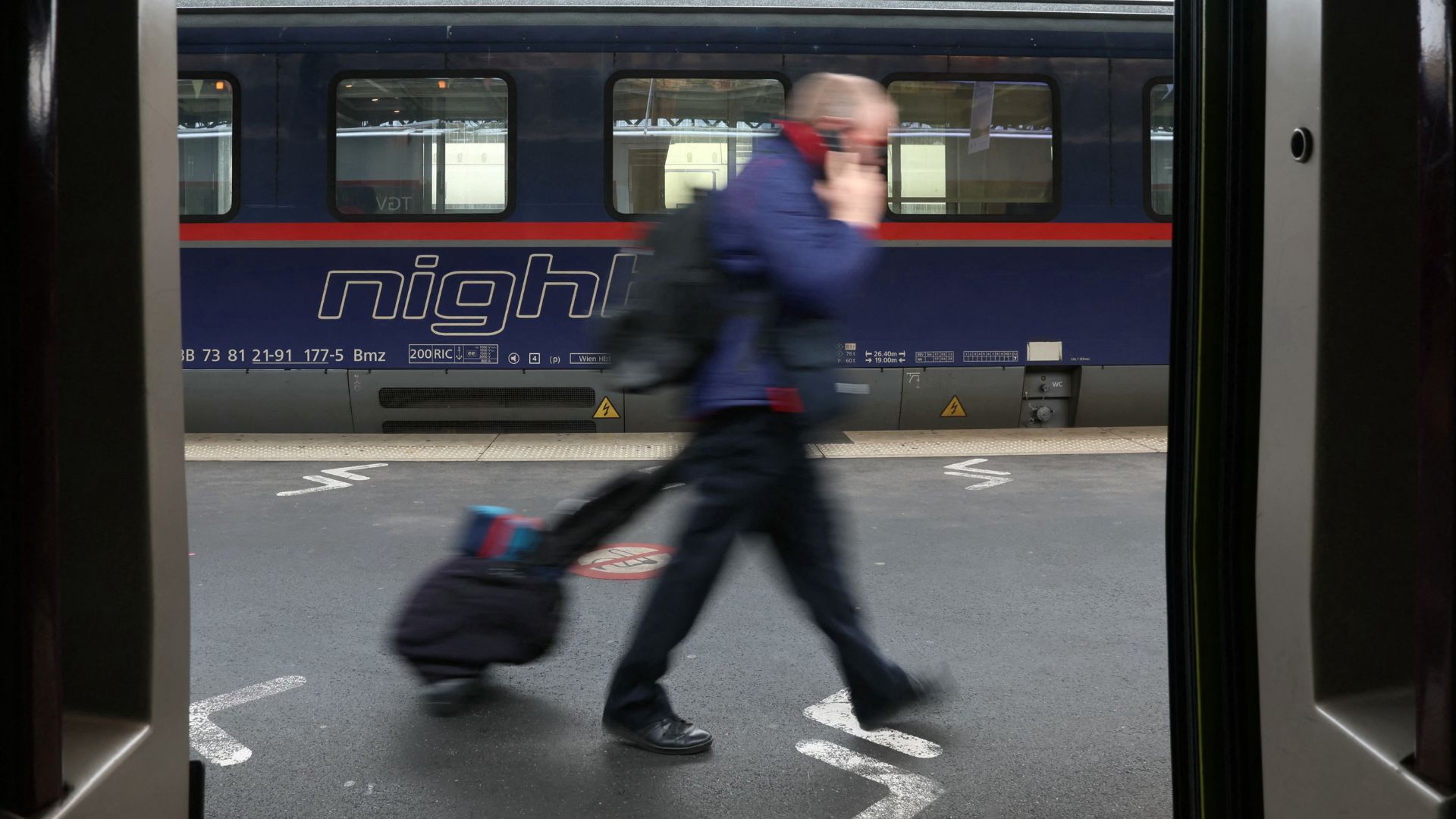02:01

After decades of decline, sleeper trains are becoming popular again in Europe. Overnight connections are expanding, with many featuring newly designed, modern sleeping compartments.
However, capacity remains low, with overnight train journeys between capitals often booked out weeks in advance. Plane connections between cities remain difficult to beat, both price and time wise.
I hopped on board for the opening of a new modern sleeper train running from Vienna to Hamburg - the 'Nightjet Next Generation'.

One of Austrian train company OeBB's Nightjet trains. /Alain Jocard/AFP
One of Austrian train company OeBB's Nightjet trains. /Alain Jocard/AFP
Besides business travelers and tourists, many train enthusiasts came from far and wide, to participate in the maiden trip.
"I'm from England and I specifically travelled here to be on this train," passenger Albie Pearce told CGTN.
Not long ago, night trains were considered a failure. In 2016, the German Railways stopped their sleeper services. Austrian Railways saw an opportunity and took over the German connections, aiming to provide a competitive and eco-friendly alternative to air travel between Europe's capitals.
"Trains need to become the backbone of climate-friendly mobility," Austria's transport minister Leonore Gewessler told CGTN. "So we need to make sure that we increase the infrastructure and we need to make it price-competitive, and all of this we are working on in Austria."
Austria's newest Nightjet service connects Vienna with Hamburg. This train is the first of a total of 33 new sleepers that will be added to the Austrian Railway fleet, with the ambitious goal of doubling the number of night train passengers by 2030.
To compete with air travel, the new Nightjet offers increased comfort such as private bathrooms with showers and new mini cabins for solo travelers.
"I think it's pretty spacious," says Albie Pearce while climbing into his mini cabin. "I think I might fit in leg wise. I've got a light control so I can change the light color and brightness."
Yet tickets for the new train can be expensive. Depending on the day of the week, the cost of a comfort sleeper ranges from $60 USD up to $800. Compared to a one and a half hour flight, the 13-hour train ride takes longer and is prone to delays.
While train enthusiasts are thrilled, convincing frequent flyers might take more time. Europe's sleeper services still have a long journey ahead.

Subscribe to Storyboard: A weekly newsletter bringing you the best of CGTN every Friday